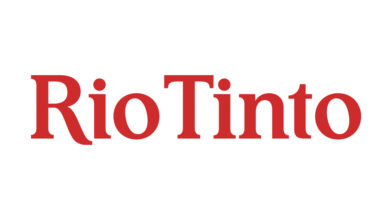Research Report on China’s Uranium Resource Import Industry 2023-2032: Natural Uranium and U235 Enriched Uranium Drivers, Challenges, and Opportunities – ResearchAndMarkets.com

DUBLIN–(BUSINESS WIRE)–The “Research Report on China’s Uranium Resource Import 2023-2032” report has been added to ResearchAndMarkets.com’s offering.
In recent years, China has seen rapid development of nuclear power. By the end of 2022, China had 53 commercial nuclear power units in operation, with a total installed capacity of 55.6 million kilowatts.
There are 23 nuclear power units under construction, with a total installed capacity of 24.19 million kilowatts. China’s installed capacity of nuclear power generation units under construction has remained the world’s largest for many years. As China’s installed nuclear power capacity rises, so does the country’s demand for uranium resources. Since China’s indigenous uranium resources are poor, with total reserves of no more than 200,000 tons and high mining costs, China needs to import large amounts of uranium resources every year.
In 2021, China’s imports of uranium resources reached 13,613.9 tons, down 18.4% year-on-year, and the import value of US$1.31 billion, down 22.6% year-on-year. In the first three quarters of 2022, China imported 9,351.5 tons of uranium, up 5.2% year-on-year, and US$1.36 billion in imports, up 48.5% year-on-year, according to the publisher’s analysis.
The average import price of uranium is volatile in 2018-2022. In 2019, the average import price of uranium resources in China is US$125.2 per kg, an increase of 38.3% year-on-year. The average import price of uranium decreases continuously from 2019 to 2021, with the average import price of uranium decreasing to US$96.5 per kg in 2021. In the first three quarters of 2022, the average import price of uranium increases significantly to US$145.6 per kg, an increase of 41.1% compared to the same period in 2021.
China imports uranium resources mainly in two categories: natural uranium and U235 enriched uranium. In 2021, China imported 13,535.8 tons of natural uranium, accounting for 99.4% of total imports, and the import value of US$1.21 billion, accounting for 92.4% of total imports. In 2021, China imported natural uranium resources from five countries and regions.
Kazakhstan is the largest source of natural uranium imports to China by import volume. In 2021, China imported 6,459.1 tons of natural uranium from Kazakhstan, accounting for 47.7% of total natural uranium imports, and US$550 million, or 45.6% of total natural uranium imports.
China lacks indigenous uranium resources and is highly dependent on imports. China’s nuclear power generation accounts for approximately 5% of the country’s total power generation, leaving much room for improvement, and The publisher expects that China’s uranium imports are expected to continue to rise from 2023-2032 as the country’s installed nuclear power generation rises further and demand for uranium resources continues to grow.
Topics covered:
- China’s Uranium Resource Import Status and Major Sources in 2018-2022
- What is the Impact of COVID-19 on China’s Uranium Resource Import?
- Which Companies are the Major Players in China’s Uranium Resource Import Market and What are their Competitive Benchmarks?
- Key Drivers and Market Opportunities in China’s Uranium Resource Import
- What are the Key Drivers, Challenges, and Opportunities for China’s Uranium Resource Import during 2023-2032?
- What is the Expected Revenue of China’s Uranium Resource Import during 2023-2032?
- What are the Strategies Adopted by the Key Players in the Market to Increase Their Market Share in the Industry?
- What are the Competitive Advantages of the Major Players in China’s Uranium Resource Import Market?
- Which Segment of China’s Uranium Resource Import is Expected to Dominate the Market in 2032?
- What are the Major Adverse Factors Facing China’s Uranium Resource Import?
Key Topics Covered:
1. 2018-2022 China Uranium Resources Import Analysis
1.1. Import Scale of Uranium Resources in China
1.1.1. Import Volume of Uranium Resources in China
1.1.2. Import Value of Uranium Resources in China
1.1.3. Import Price of Uranium Resources in China
1.1.4. Apparent Consumption of Uranium Resources in China
1.1.5. Import Dependence of Uranium Resources in China
1.2 Major Import Sources of Uranium Resources in China
1.2.1. By Import Volume
1.2.2. By Import Value
2. China’s Natural Uranium Import Analysis, 2018-2022
2.1 Natural Uranium Import Volume
2.2 Natural Uranium Import Volume
2.3. Natural Uranium Import Prices
2.4 Import Dependence of Natural Uranium
2.5 Import Analysis of Natural Uranium by Type
2.5.1 Natural Uranium Imports by Type
2.5.2 Import Value of Natural Uranium by Category
2.5.3. Import Prices of Natural Uranium by Category
2.6 Sources of Natural Uranium Imports
2.6.1. By Import Volume
2.6.2. By Import Value
3. 2018-2022 China Import Analysis of Enriched Uranium
3.1. Import Volume of Enriched Uranium
3.2. Import Value of Enriched Uranium
3.3. Import Price of Enriched Uranium
3.4 Import Dependence of Enriched Uranium
3.5 Analysis of Various Types of Enriched Uranium Imports
3.5.1 Enriched Uranium Imports by Type
3.5.2. Import Value of Enriched Uranium by Type
3.5.3. Import Prices of Various Types of Enriched Uranium
3.6 Import Sources of Enriched Uranium
3.6.1. By Import Volume
3.6.2. By Import Value
4. 2018-2022 Analysis of Major Import Sources of Uranium Resources in China
4.1 Analysis of Uranium Resources Imports from Kazakhstan
4.2. Analysis of Uranium Resources Imports from Namibia
4.3 Analysis of Uranium Resources Imports from Uzbekistan
4.4 Analysis of Uranium Resources Imports from the Russian Federation
4.5 Analysis of Uranium Imports into Germany
4.6 Analysis of Other Uranium Resources Imports
5. China’s Uranium Resource Import Outlook 2023-2032
5.1 Factors Affecting China’s Uranium Resource Imports
5.1.1 Favorable Factors
5.1.2 Disadvantageous Factors
5.2. China’s Uranium Resource Import Forecast, 2023-2032
5.2.1 Import Volume Forecast
5.2.2. Forecast of Major Import Sources
5.2.3. Forecast of Major Imported Uranium Resources Types
For more information about this report visit https://www.researchandmarkets.com/r/sbtnur
Contacts
ResearchAndMarkets.com
Laura Wood, Senior Press Manager
[email protected]
For E.S.T Office Hours Call 1-917-300-0470
For U.S./ CAN Toll Free Call 1-800-526-8630
For GMT Office Hours Call +353-1-416-8900




